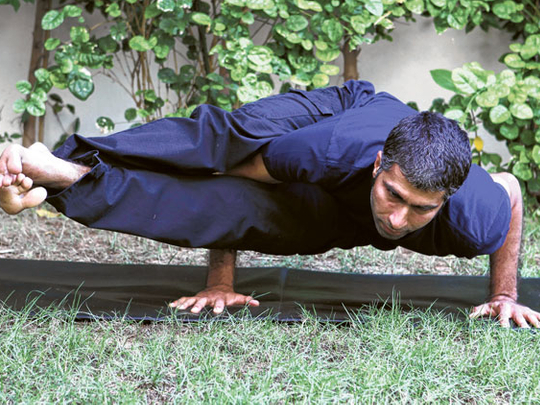
Today, let's take a look at Ashtavakrasana, or the eight-angle pose. "Ashta" means eight and "vakra" means crooked, or bent.
Ashtavakrasana is one of the few postures which require a combination of balance, strength and flexibility to hold your ground. The main challenge in this pose is sufficient coordination in the body to sustain the right counterbalance with the legs extended. At the psychic level, the pose inculcates the ability to remain unperturbed through the various challenges one encounters.
Ashtavakrasana
- Stand with feet shoulder-width apart and hands at the sides.
- Bend knees and place the right palm on the floor between feet and the left palm a little in front of the left foot.
- Place the right leg above the right arm, resting the thigh on the back of the upper right arm just above the elbow.
- Bring the left foot forward and place it on the right ankle.
- While exhaling, lift both legs from the floor by shifting your body weight on to your arms. Stretch both legs to the right side keeping them interlocked. The right arm is between your thighs.
- Balancing on the arms, bend elbows and lower the upper body and head until they are parallel to the floor.
- This is the final position. Hold as long as comfortable while breathing normally.
- Straighten arms and raise upper body, and then release the legs and slowly lower them to the floor.
- Repeat the sequence to the left.
Benefits
- Strengthens the wrists, arms and shoulders.
- Improves core strength and tones the abdominal muscles.
- Improves balance and coordination.
Caution
- Those having wrist, elbow or shoulder injuries should avoid this pose. Those with high or low blood pressure should practise under expert guidance.
Bharat Thakur guides you through practices that will connect you to the wisdom of the ancient Indian science of exercising.











